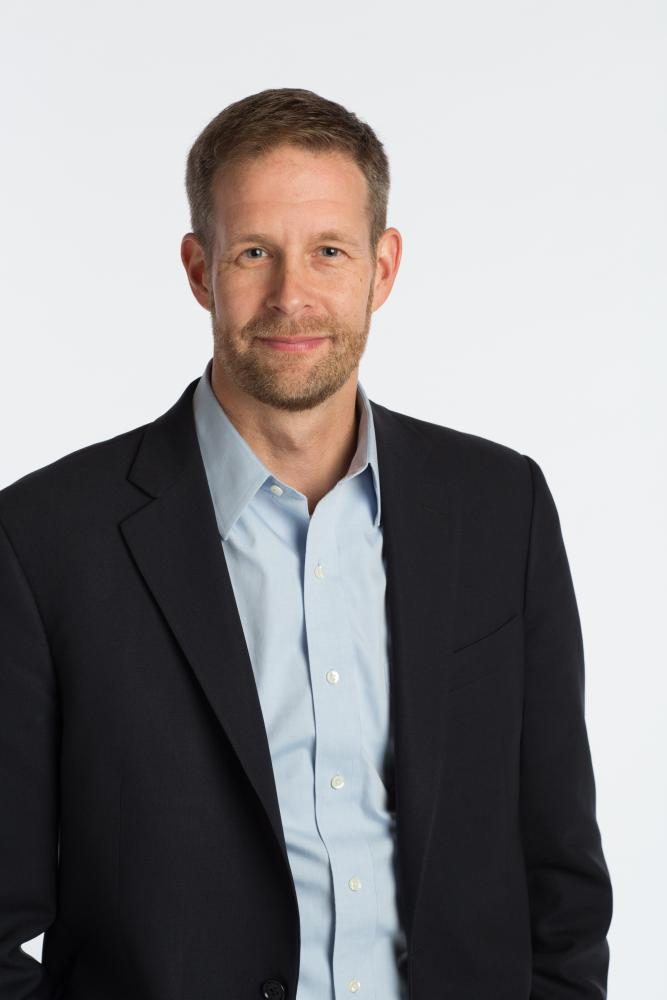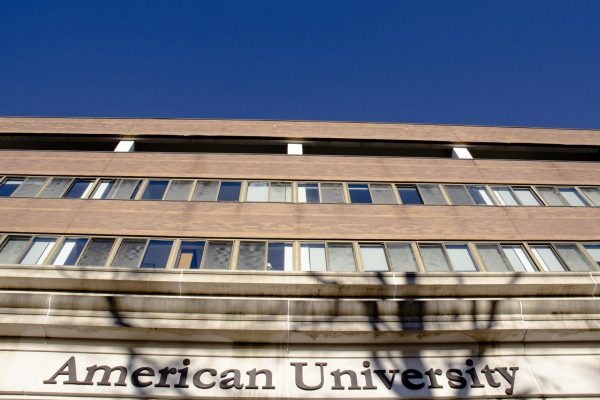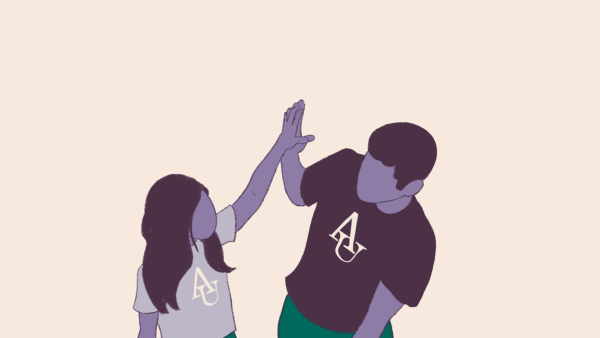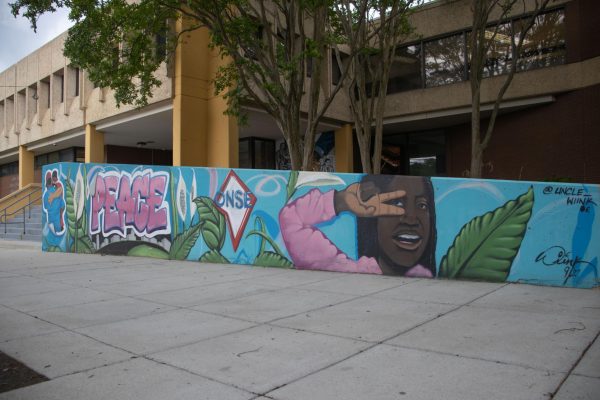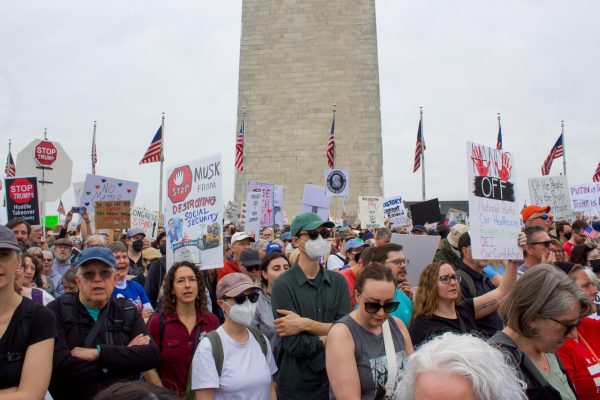Defining ‘Cappuccino City’ – Profile: Derek Hyra
Derek Hyra is an associate professor in the Department of Public Administration and Policy at American University and the author of The New Urban Renewal: The Economic Transformation of Harlem and Bronzeville and Race, Class, and Politics in the Cappuccino City. He has worked in the U.S. Department of Housing and Urban Development, the U.S. Department of the Treasury, the Alexandria Redevelopment and Housing Authority and on the U.S. Small Business Administration’s Council on Underserved Communities. AWOL sat down with him to discuss the gentrification of D.C.’s Shaw/U-Street neighborhood, social integration and empathetic urban development.
What began your interest in neighborhood change?
I think a lot of my interests in neighborhood change came from experiences I had in high school. I grew up in a suburb north of New York City in Westchester County. It was a very segregated community. It had about 30,000 people, and there were maybe five black families in the entire town. Living in an affluent, segregated area, I didn’t have much exposure to inner city areas. But when I was in high school, I joined a [basketball] team based out of Riverside Church, which was in West Harlem. I played for two years in the spring and in the summer in Central Harlem. Most of the guys in my team were from Harlem or from the South Bronx. Going into Harlem, which was coming off the crack epidemic, I would see crack vials, gangs and abandoned buildings.
About a year and a half after playing, our coach paid for SAT tutoring. You had to get over a 700 to play in your first year of college. One day, the coach asked how many people had gotten over a 700, and I was the only one on the team who had. I was also the only white person on the team. [My teammates] seemed very similar to me in terms of intellectual capability. I thought there must be something about growing up in Harlem or in the South Bronx that has a detrimental impact on people reaching their innate ability and full potential. That experience of playing basketball in Harlem led me in college to think about doing something to better the urban environment. How can we bring resources and development to heavily concentrated poverty areas, but in a way that doesn’t displace everyone; in a way that actually benefits guys like my teammates?
In your latest book you discuss the development of D.C.’s Shaw/U-Street neighborhood. Can you talk about your findings?
I’ve studied Harlem, the South Side of Chicago and now the Shaw/U-Street area. These three are some of the most historical black communities in the country. The Shaw/U-Street area has gone through major transformation in the last 20 years, maybe 30. There’s been an awful lot of economic changes, but also racial changes. It used to be 90 percent African-American in 1970. It’s now only 30 percent African-American. It is for D.C. a very diverse neighborhood in terms of race and ethnicity. But what I found is when you’re in the community, it segregates.
There’s this sort of micro-level segregation; I’ve coined it diversity segregation. It’s neighborhoods that on the census-track level look very diverse, but when you get into the civic institutions, the churches, the recreation centers, the parks, the restaurant, it begins to segregate. We had these theories that mixed-income, mixed-race communities would benefit low income communities, because it would broaden their social networks. They’d be talking to and interacting with the newcomers, but what I found is that while that community has developed, there isn’t the meaningful social interactions happening.
I think that’s one of the major findings from the book, because what we’ve assumed as urban planners and policymakers is that when we create diverse communities that people will interact with one another. You see that you really need to the grease the wheels of social integration to stimulate meaningful interaction. Without that, you have these groups that have been so segregated for so long that just because their housing is next to one another does not mean they’ll socialize. If you don’t have that social interaction, mixed-income communities may not benefit the poor very much.
How can you make that social interaction happen? Is the saying “birds of a feather flock together” necessarily true?
One thing is that many of the people that are moving –– the millennials –– to a place like Shaw are moving because of the diversity. Most neighborhoods like Shaw would have never seen a white influx. It’s only been recently in the last ten years that we see African-American neighborhoods seeing an influx of whites. Most of the whites that are going there are saying that they want to be in an environment that is not a homogenous suburb or central city area like Georgetown or Foggy Bottom.
We’ve had policies in the US that have legally segregated and separated people. We’ve had discrimination in red-lining. We’ve had zoning policies that have made it tough for us to integrate. We’re trying to break those things down from the past. I think that since there has been so much separation from the past, that people don’t know how to integrate. I think we need community organizations that think about strategic ways to bring people together. Maybe it’s a food, music, or art festival or a community gardening initiative. There has to be programming in a diverse community that recognizes these differences, but also recognizes that we have more similarities than differences as people. Each community is going to have its own strategy to bring people together. Governments and communities need to help with facilitating that integration. It just won’t happen naturally, even if people are seeking to be in diverse communities.
Why are historic African-American communities targeted for gentrification? Why are they attracting white millennials?
I think part of that relates to housing policy of the past. There was “urban renewal” in the 1940s, 50s and 60s and what that did was create poverty pockets of public housing that traditionally tended to be right outside the business districts of cities. Now, there is a “back to the city” movement in which millennials want to be near the downtown. However, not everyone can afford the downtown. So, they’re seeking neighborhoods close to the downtown, and neighborhoods outside the downtown are where public housing neighborhoods tended to be located.
In the 1990s, there was a push to knock down the public housing that was distressed in these neighborhoods. When that public housing was demolished, I think whites were more likely to go to those communities. Knocking down the projects was a symbol that maybe those neighborhoods would revitalize. When you bring together this “back to the city” movement with the knocking down of the projects, you get a recipe for gentrification.
Why is D.C. called the “Cappuccino City”?
I coined D.C. the “Cappuccino City” to play off what it had been known as: “Chocolate City.” It had been known as “Chocolate City” because it was a major city that had a black majority. But it wasn’t just the demographics, it was also that African-Americans took control of [the political power structure]. African-Americans have led the D.C. government since it was re-instituted in 1973 with home rule. Black empowerment is part of this “Chocolate City” notion.
Now, I named it “Cappuccino City” because it’s a metaphor for what is happening in D.C. Cappuccino is the ground-up coffee, which makes the espresso, but then you add the steam-white foam of milk. That’s the millennials that are moving back. You add the milk, and the price doubles. An espresso is two bucks, but a cappuccino is four. When white millennials moved back to D.C., property values were at about $250,000 and then they went up to about $500,000.
The other part is that whites are moving to the central business districts. When you add the foam to the espresso, you see the foam in the middle of a cappuccino, and the darkness moves out to the outer periphery. Poverty and people of color are moving out to the outskirts of D.C. and to the suburbs. The spatial formation of a cappuccino is what the D.C. area is starting to look like. Also, related to it, is the political change that is happening. The white millennials are taking over the neighborhood associations, and now D.C. City Council has a white majority for the first time since 1973. So, you have a political shift in which African-Americans are losing political power, and whites are gaining it.
What can we as members of the D.C. area do to advance urban development in responsible, empathetic and effective ways?
I think what’s important for people coming to D.C. is to understand the history of the neighborhoods they’re moving into. Get to know their neighborhoods. Get to know the people that have been living there for decades. I think many of the millennials coming to D.C. are civically engaged and want to get involved in politics. Getting involved in their advisory neighborhood commissions and community organizations is very healthy. But what happens many times is that newcomers that get civically involved say that their idea is the best idea and the things that they want to see is what all people should want. And that may not necessarily be the case. Really talk to your neighbors and see what their values and interests are, and try to come up with things that resonate with everyone. Try not think that just because you like bikes, for example, means that everyone likes bikes. What can we do together to make sure that everyone’s interests are catered to? I think that’s the way to do empathetic civic engagement.

A Senior majoring in International Studies and Economics, my areas of interest include Latinx issues, international migration, identity, and ethics. I...


